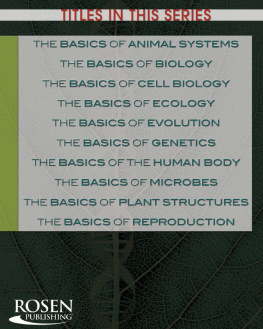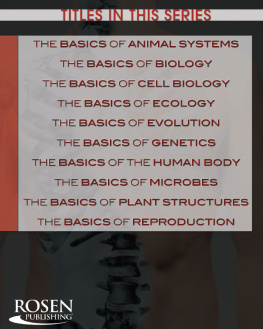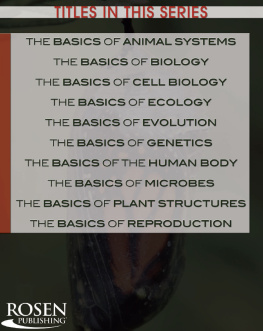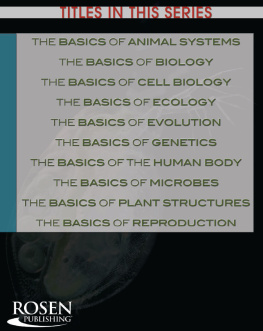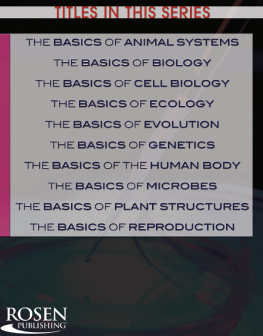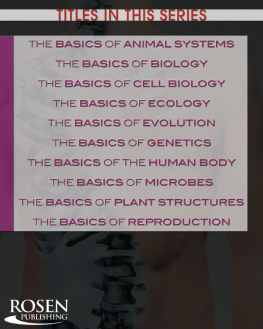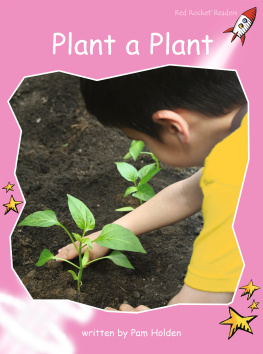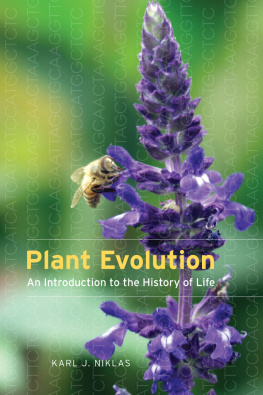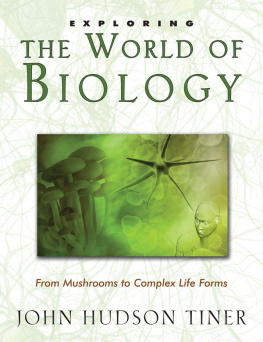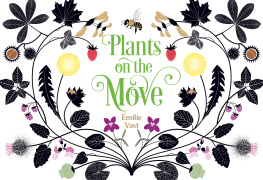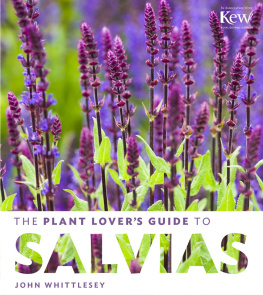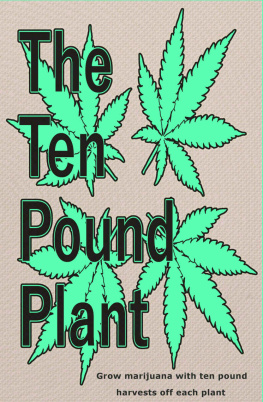This edition published in 2014 by:
The Rosen Publishing Group, Inc.
29 East 21st Street
New York, NY 10010
Additional end matter copyright 2014 by The Rosen Publishing Group, Inc.
All rights reserved. No part of this book may be reproduced in any form without permission in writing from the publisher, except by a reviewer.
Library of Congress Cataloging-in-Publication Data
Wanjie, Anne.
The basics of plant structures/Anne Wanjie.1st ed.New York:
Rosen, 2014
p. cm.(Core concepts)
Includes bibliographical references and index.
ISBN 978-1-4777-0553-7 (library binding)
1. BotanyJuvenile literature. I. Title.
QK49 .W36 2014
Manufactured in the United States of America
CPSIA Compliance Information: Batch #S13YA: For further information, contact Rosen Publishing, New York, New York, at 1-800-237-9932.
2004 Brown Bear Books Ltd.
CONTENTS
CHAPTER 1: THE PLANT KINGDOM
CHAPTER 2: HOW PLANTS FUNCTION
CHAPTER 3: AMAZING ADAPTATIONS
CHAPTER 4: REGULATION OF GROWTH AND DEVELOPMENT
CHAPTER 5: PLANT REPRODUCTION
CHAPTER 6: PEOPLE AND PLANTS
CHAPTER 7: MARINE VEGETATION
CHAPTER 8: BIOGRAPHY: CAROLUS LINNAEUS
GLOSSARY
FOR MORE INFORMATION
FOR FURTHER READING
INDEX
CHAPTER ONE
THE PLANT KINGDOM
Plants form one of the five kingdoms of living things. Plants include ferns that produce spores, cone-bearing conifers, and plants that produce seeds using flowers.
T here are hundreds of thousands of different species of plants on Earth. Plants vary from liverworts just a fraction of an inch high to giant redwood trees hundreds of feet tall.
WHAT IS A PLANT?
Plants make their own food by collecting energy from sunlight and using it to turn carbon dioxide and water into sugars. This process is called photosynthesis.
Plants are not the only organisms that make food by photosynthesis. Algae also photosynthesize. Organisms that photosynthesize have chloroplasts in their cells. Plant cells not only contain chloroplasts but differ from other organisms in one other important but not very obvious way. Plants cells have a cell wall made of a tough substance called cellulose. The only multicellular organisms other than plants to have a cell wall are fungi. Fungi are not plants: They cannot photosynthesize, and their cell walls are made out of a material called chitin.
Sunlight shines through the trees. Trees use energy from the sun in the process of photosynthesis.
Scientists think that the first land plants appeared about 500 million years ago. Bryophytes (liverworts, horn-worts, and mosses) are similar to these first plants. Around 16,000 bryophyte species occur today. Unlike other plants, they do not have vascular tissues (structures that carry fluids around the plant). Bryophytes, ferns, and horsetails reproduce using spores.
Flowering plants are the biggest and most varied of all the plant divisions (major groups). They appeared more than 100 million years ago. Flowering plants mostly reproduce using seeds, and some have large flowers. The flo-wers attract insects and birds that feed on nectar (a sweet liquid) from the plant. While visiting flowers, insects carry pollen (which contains male sex cells) from one plant to another. Male sex cells fertilize the plants. Other flowering plants, including many broad-leaved trees and grasses, have small, insignificant-looking flowers. These plants spread their pollen on the wind.
Seaweeds can be green, red, or brown. Since they need a place to attach to with access to sunlight, seaweeds generally live in shallow, coastal areas.
WHAT ARE ALGAE?
Algae are most familiar from wet environments: The slime on wet rocks and the green color in rivers, lakes, and seawater are caused by millions of tiny algae. There are thousands of species. Many algae are single-celled organisms, but seaweeds are multicellular algae. From the outside seaweeds look like plants, but they have no roots, and their stems do not contain tubes that transport water and food.
Scientists once classified algae as types of plants but now think the situation is more complex. Some classify green algae with plants, but others put them with protists. Seaweeds, too, can be classified as plants or protists. Most scientists have renamed blue-green algae as cyanobacteria and placed them with bacteria.
CHAPTER TWO
HOW PLANTS FUNCTION
Plants are vital to life on Earth because of their ability to make food. They use their leaves, stems, and roots in the process.
H erbivores are animals that eat plants. They get their energy from digesting the plants and so take the energy the plants captured through photosynthesis. Predators (hunters) then eat the herbivores. In aquatic (watery) environments, seaweeds and tiny single-celled algae are usually the base of food chains and webs.
Plants are the basis of all life on land. Plants photosynthesize, using sunlight energy to make their own food and build their tissues. Sunlight, carbon dioxide, water, and minerals from the soil, such as nitrogen and phosphorus, are all most plants need to grow.
Cows graze on plants. Plants are producers: They form the base of all food chains on land. Animals are consumers: They eat plants, animals that eat plants, or other meat eaters.
PLANT CELLS
Like animals, plants consist of many tiny cells. Plant and animal cells are similar, but plant cells have three unique features:
They are surrounded by a tough cell wall made mainly of cellulose.
They have one or more large saclike vacuoles. A vacuole is a storage space filled with a watery liquid called cell sap.
Some plant cells have chloroplasts, which contain chlorophyll, a green chemical that enables photosynthesis to occur (see below).
STRUCTURE OF A PLANT CELL
Plant cells have structures called chloroplasts inside which photosynthesis takes place. Plant cells also have mitochondria, which produce energy through respiration.
PHOTOSYNTHESIS
The basic chemical reaction of photosynthesis is:
This chemical reaction involves many steps. They include trapping energy from the sun, called the light reaction, and capturing carbon dioxide from the air, which does not need light and is called the dark reaction. Like animals, plants must respire to release energy for growth and cell function. Chemically this is photosynthesis in reverse: In the presence of oxygen, glucose forms carbon dioxide and water. Photosynthesis is faster than respiration during the day. But at night respiration continues, and photosynthesis stops.

